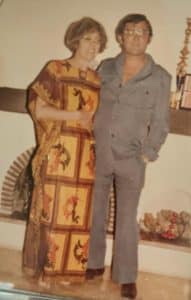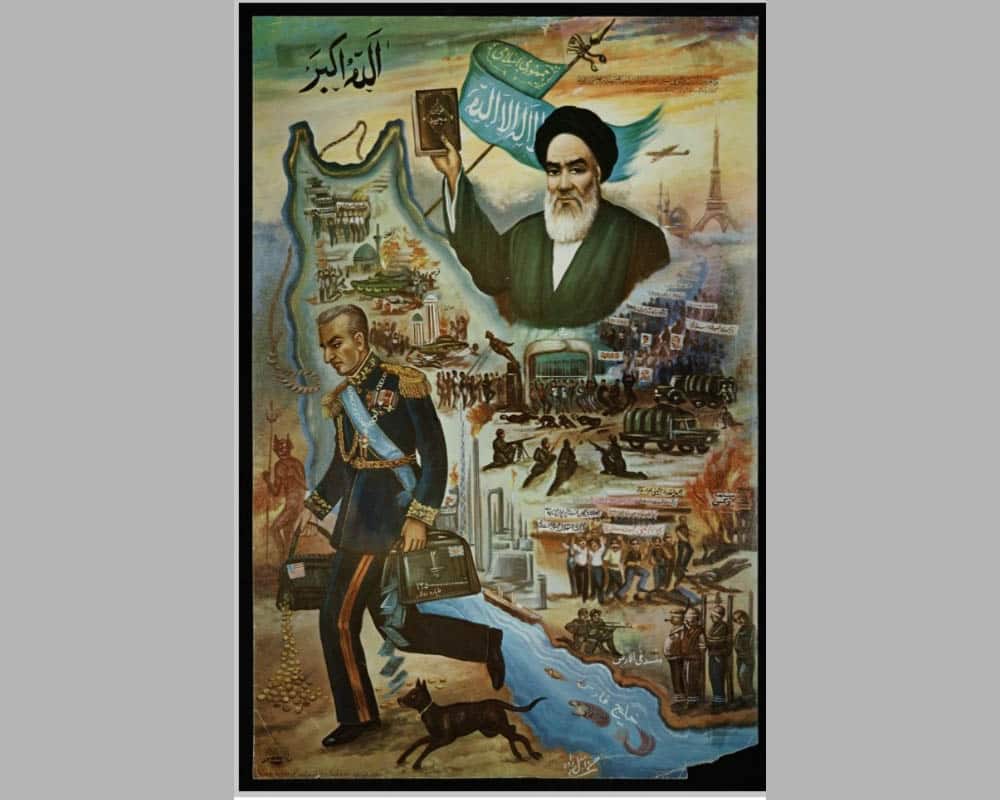- Rojales based Mary Ivy Nell’s Exclusive interview with Andrew Atkinson concludes surrounding the Iran revolution in 1978.
MARY Ivy Nell recalls her final days of being caught up in the Iranian revolution in 1978 watching police and armed troops arrive on the streets amid mobs on the rampage.
“My first reaction was to go up to the roof of our house, where I found our landlord with the other Iranian occupants of the apartment block, looking very distressed,” said Mary.
“He was most concerned that I should not be seen – and begged me to return downstairs.
“It is difficult to explain the fear and the sense of helplessness I felt when I saw the destruction all around.
“It was like a London blitz, with smoke and flames as far as the eye could see – people running in groups along side streets – some of them actually looking pleased that the Shah’s control of the country was disappearing.
“My husband’s bus driver had refused to drive beyond the crossroads, half a mile from our road, and he had had to make a quick dash ahead of the mob – on the rampage, burning cars and ransacking shops.

“It had been quite a day and November 5th Bonfire Night seemed very appropriate.
“Within the week we all returned to work and further bulletins were circulated, urging all expatriates to stay out of public places and remain indoors during the second week in December when Moslems were due to celebrate several sad holidays.
“On the evening of the 11th November as we sat chatting, we both realised that the time had come to leave Iran.
“The situation was not going to improve and so resignations were submitted, packers duly arrived for our personal effects and we had our last get together with friends on the 23rd November.
“We finally flew from Mehrabad Airport to Heathrow on the morning of the 1st December, with a feeling of regret that we had been compelled to leave the country, which had come to mean so much to us both. “Subsequent events proved that we were right in choosing to leave at that time, as we had seen the end of an era,” recalled Mary.
The Iranian revolution was a series of events culminating in the overthrow of the Pahlavi dynasty under Shah Mohammad Reza Pahlavi.
That lead to the replacement of his government with an Islamic republic under the rule of Ayatollah Ruhollah Khomeini, a leader of one of the factions in the revolt.
Demonstrations, strikes and civil resistance took place, which lead to the overthrow of the Shah and monarchy and the 1979 oil crisis.
On 16 January 1979, the Shah had fled Iran in exile as the last Persian monarch, leaving his duties to a regency council and Shapour Bakhtiar, who was an opposition-based prime minister.
On 1 February 1979 Ayatollah Ruhollah Khomeini, returned to Iran after 14 years in political exile.
Iran is a founding member of the United Nations, the ECO, the OIC, and the OPEC. It has large reserves of fossil fuels, including the world’s second-largest natural gas supply and the fourth-largest proven oil reserves.





